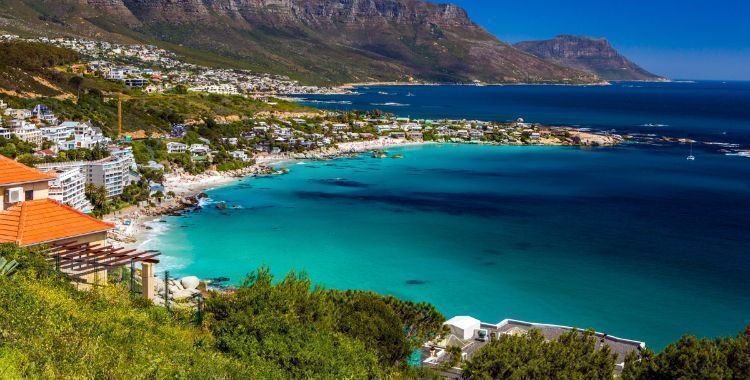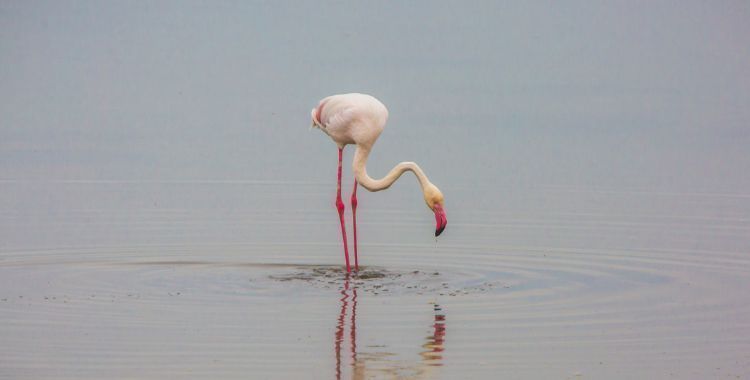Best of the Best
We scoured the Earth to
bring you the best
Photo Education
Learn photography tips
from a professional
New Friends
We curate groups of
open-minded travellers
Video of Your Trip
We’ll create an epic
video of your trip

Leave footprints on some of the world's highest sand dunes and experience once in a lifetime wildlife Safaris.
From the cosmopolitan streets of Cape Town and Table Bay to the desert and lunar scenery of Namibia, witness the diversity of southwestern Africa on this 7-day nature adventure.


Explore oceanside Capetown before we travel North along the west coast and cross into surreal Namibia.


Namibia has more than vast deserts and picture-perfect sand dunes. Our overland tour visits peaceful riversides, relaxing hot springs, and unforgettable historical towns.


Whether you are a pro photographer or just enjoy taking cool shots with your phone, our Matador photo instructors will work with you during informal photo walks and mini-workshops to take your personal travel photography to another level.


Our professional in-house filmmaker will be documenting our adventure on a daily basis, and we will give you the video of this trip so that you can relive the adventure and share it with friends and family on social media.


We curate groups of like-minded adventurers for the perfect vibe. Bring your friends and make new ones on this epic adventure.


We aim to travel as consciously as possible. This trip supports local communities and wildlife reserves.




Leaving Cape Town this morning, we stop and take a look at Table Mountain from across Table Bay before making our way to the Cederberg region. Boasting some of the most picturesque mountains and orange farms. Cederberg is home to the famous Rooibos tea farm which is world renowned for its health benefits and unique taste. We enjoy dinner at our overnight stop where we have an opportunity to experience South African hospitality at its best.
The Cederberg Mountains and nature reserve are situated in nearby Clanwilliam. They were named after the endangered ancient Clanwilliam Cedar trees which are indigenous to the area, growing up to heights of over 1500 meters. The mountains spread up to 50 kilometers both north and south, and up to 20 kilometers both east and west with the highest summit within the range being Sneeuberg at 2028 meters. This region comprises intense sandstone rock formations, in various shades of red and orange The Cederberg Wilderness Area is renowned for containing incredible ancient San rock art. It is also well-known for the discovery of significant fossils, specifically within recent years. These fossils are of primitive fish and can be dated back almost 450 million years to the Ordovician Period.
Accommodation: Camp: Marcuskraal Campsite
Route: Cape Town to Citrusdal ±195 km
Meals: Lunch, Dinner
Today we journey through the Northern Cape and Namaqualand, making a stop off at the isolated town of Springbok to gather a few last minute supplies. Once we have crossed the Namibian border, we arrive at our charming chalets that overlook the sparkling Orange River which creates a natural divider between South Africa and Namibia. For those traveling during the spring months (July – September) you may be fortunate enough to experience the wild flowers renowned in this region.
Originally called the Nu Gariep (‘Great River’) by the native Nama people, the Orange River was named by Colonel Robert Gordon – a Dutch explorer who once commanded the Cape garrison for several years. It is said that Gordon named the river in honor of William of Orange, but a more popular belief is that it was simply named so because of its color. Presently, it is known by its original name (Gariep River) and it is the longest river throughout South Africa, stretching to a distance of 1800 kilometers.
Rising in the Drakensberg mountains in Lesotho, where it is known as Sengu, it flows west through South Africa and out into the Atlantic Ocean once it reaches Alexander Bay. On its lengthy voyage, the river boasts a wide selection of beautiful landscapes. It passes through rough mountainous terrains and never-ending dune fields. The Orange forms part of the international border that runs between South Africa and Namibia, South Africa and Lesotho, and numerous provincial borders within South Africa.
Though the river does not run through any main cities, it plays a crucial role within the economy of South Africa by providing water to be used for irrigation and hydroelectric power. The Orange River is also responsible for diamond deposits all along the coast of Namibia. For millions of years this river acted as a transportation system that took diamonds from volcanic pipes within Kimberley, South Africa out into the ocean. From here, currents would take the diamonds north where the surf would catch them and place them into the Namib dune fields.
Accommodation: Camp: Fiddlers Creek Campsite
Route: Citrusdal to Vioolsdrift ±509 km
Meals: Breakfast, Lunch, Dinner
Included Highlight: Spring Wild Flowers
Day 3
We have an opportunity to partake in an optional canoe trip down the Orange River this morning, or we could choose to stay behind and devote our time to relax and unwind next to the river. After lunch we leave the Orange River and make our way inland, crossing the border to Namibia. We make a brief stop at Ai-Ais for a dip in the mineral hot springs before arriving at our camp for the evening.
Meaning ‘burning water’ in the local language of Nama, Ai-Ais refers to the sulfurous thermal hot water springs situated at the bottom of the mountains and at Fish River Canyon’s southern end. The Ai-Ais (pronounced ‘eye-ice’) springs originate from deep beneath the river bed and create a haven in this extremely dry area. The hot springs were used by the German military troops as a base camp during the Nama uprising. This area was once again used as a base in 1915 by South African troops who were healing from injuries incurred during the South-West Africa Campaign. The springs were declared national monuments in the 1960s and subsequently became a conservation area. The Ai-Ais camp was officially opened on the 16th of March, 1971. The hot water, heavy with sulfur, chloride and fluoride, has an average temperature of approximately 60 degrees Celsius and is renowned as both healing and relaxing.
Accommodation: Camp: NWR Hobas Campsite
Route: Orange/Gariep River to Fish River Canyon ±180 km
Meals: Breakfast, Lunch, Dinner
Optional Activity: Half-day canoe trip
Waking early this morning, we will drive to the rim of the Fish River Canyon enjoying the beautiful sunrise in this magical place and enjoy a walk along the rim of the canyon before making our way to Keetmanshoop. The afternoon is spent exploring the magnificent Quiver Tree Forest and the Giants Playground.
Accommodation: Campsite: Seeheim Hotel
Route: Fish River Canyon to Keetmanshoop ±260 km
Meals: Breakfast, Lunch, Dinner
Included Highlights: Scenic walk along the rim of Fish River Canyon / Visit to Quiver Tree Forest and Giants Playground
Every journey has long traveling days and today we will venture deep into the Namib Desert making our way from the grasslands to the red dunes that cover the western reaches of the desert. Our camp this evening is at the tip of the dune fields where we enjoy the unique sounds of the Barking Gecko as we fall asleep.
Accommodation: Camp: NWR Sesriem campsite or similar.
Route: Keetmanshoop to Namib Naukluft National Park ±470 km
Meals: Breakfast, Lunch, Dinner
Included Highlight: Sesriem Canyon
We begin our day climbing Dune 45 enjoying the magnificent views of the sun rising on the dunes before making our way back down for a delicious breakfast. We hop onto a 4×4 and are transferred to Sossusvlei where we embark on a walk through the Salt Pans. Tonight is spent under the picturesque stars of the Namib desert. In the afternoon we will enjoy an educational desert excursion with our local guide.
This area is renowned as a photographers dream destination, and the surreal landscape is unimaginable. Our photography guides will help you capture the unique beauty of Sossusvlei and Deadvlei
Accommodation: Camp: Boesman’s Camp or similar (no website)
Route: Namib-Naukluft National Park – Naukluft Area
Meals: Breakfast, Lunch, Dinner
Included Highlight: Sunrise hike up Dune 45, 4×4 shuttle to Sossusvlei / Deadvlei, Guided desert walk with local expert
Leaving behind the Namib today, we will cross the Tropic of Capricorn on the way from the Atlantic Coast. We travel west on our way to the coastal town of Swakopmund. On our way we stop briefly in Walvis Bay at the lagoon before arriving at our next destination for the evening. There are a variety of activities available in Swakopmund.
Accommodation: Camp: Amanpuri Travellers Lodge or Strauss Holiday Accommodation
Route: Naukluft Area to Swakopmund
Meals: Breakfast, Lunch, Dinner
Included Activity: Tropic of Capricorn, Walvis Bay Lagoon
The tour can accommodate up to 14 guests.
All tour operators, hotel rooms, transport providers and third party vendors adhere to strict COVID health precautions and safety measures.
All Matador Trips are in small groups and we work to limit exposure in all activities.
Traveler’s insurance is strongly recommended for all travelers. Ask for recommendations if you do not have a preferred provider.
US Travel advisories have the most up to date COVID information for any traveler.
Before applying to take part in this experience, it’s important to understand that this is not a tour or a luxury travel experience.
We scoured the Earth to
bring you the best
Learn photography tips
from a professional
We curate groups of
open-minded travellers
We’ll create an epic
video of your trip
We use cookies for analytics tracking. For more information read our privacy policy.